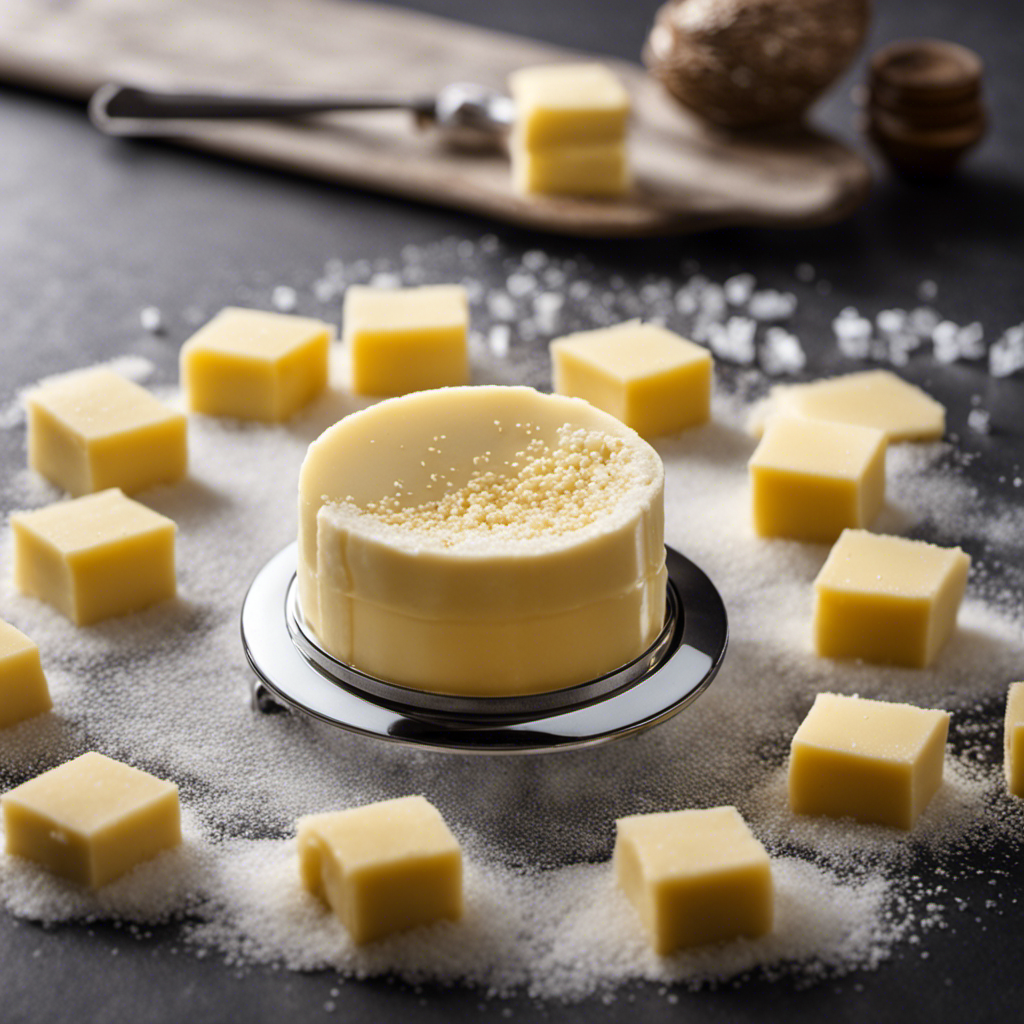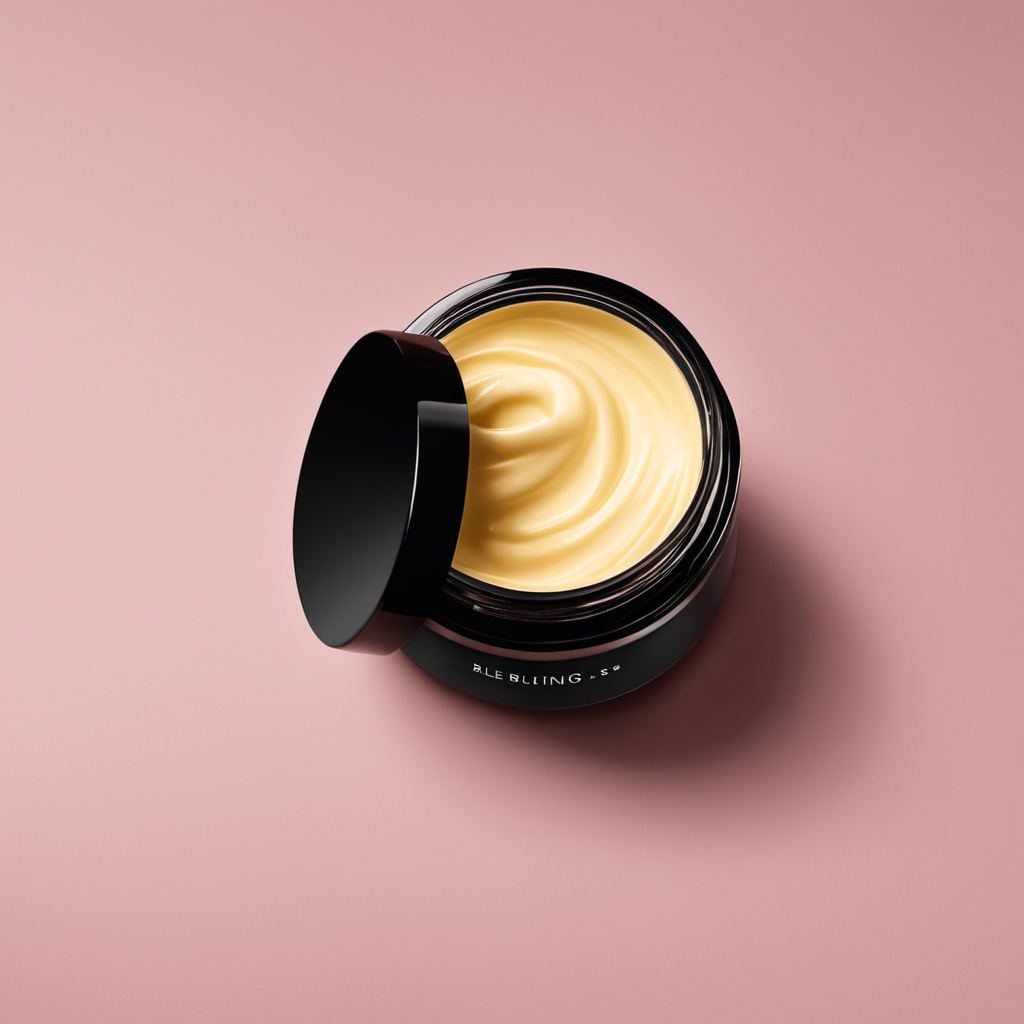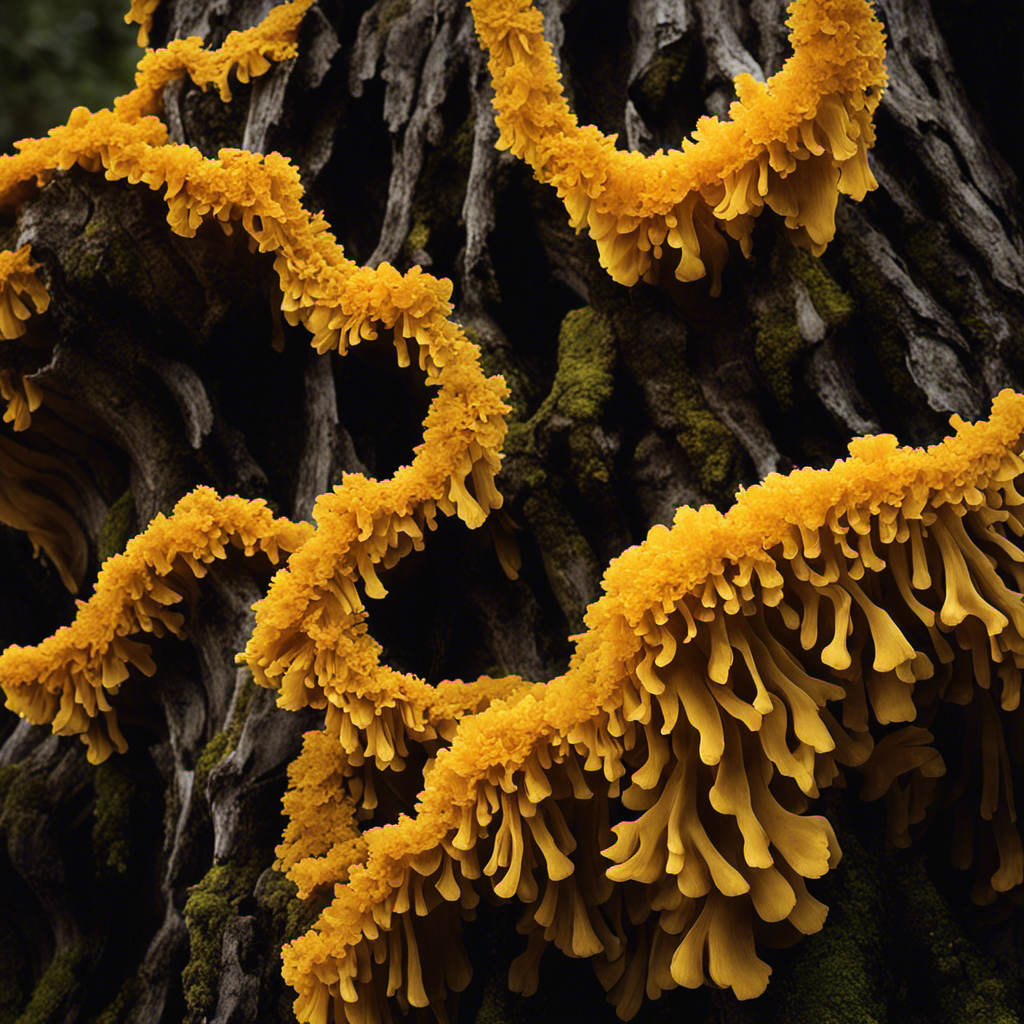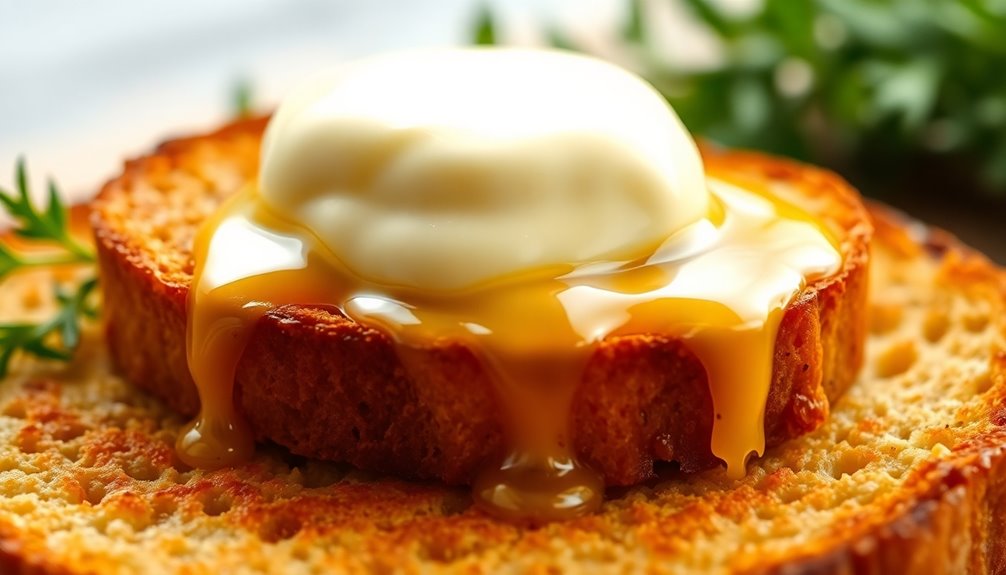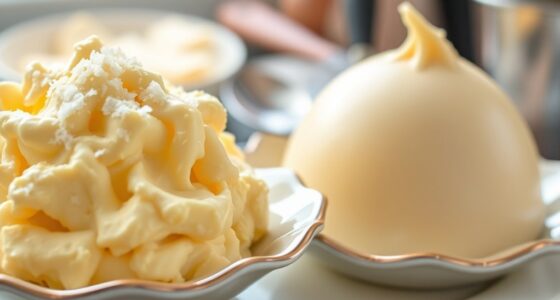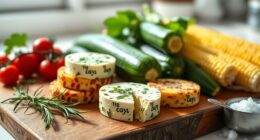I will never forget my first trip to Sam’s Club, particularly the moment I stumbled upon the butter aisle. It was like discovering a hidden treasure trove of creamy goodness.
As I stood there, surrounded by rows upon rows of butter, I couldn’t help but wonder, how much is butter at Sam’s Club?
In this article, I will delve into the world of Sam’s Club butter prices, comparing deals, exploring different brands, and uncovering tips to help you save money.
Get ready to dive into the buttery paradise that awaits you at Sam’s Club.
Key Takeaways
- Butter prices at Sam’s Club have slightly increased in recent weeks.
- Sam’s Club offers butter at lower prices compared to most grocery stores.
- Purchasing butter in bulk at Sam’s Club can result in significant savings.
- Sam’s Club consistently offers competitive prices on bulk butter.
Butter Prices at Sam’s Club
Butter’s prices at Sam’s Club have gone up slightly in the past few weeks. When it comes to butter price fluctuations, it’s important to consider various factors that can influence the cost.
The availability of milk, which is the primary ingredient in butter, can affect its price. Additionally, market demand and production costs also play a role in determining butter prices.
Sam’s Club aims to offer high-quality butter to its customers, ensuring freshness and taste. They source their butter from reputable suppliers who prioritize maintaining the quality of their products. With stringent quality control measures in place, Sam’s Club ensures that their butter meets the highest standards.
Comparing Sam’s Club Butter Prices
When it comes to purchasing butter, price comparison analysis is essential for finding the best value for money.
Sam’s Club offers a wide range of butter options, making it a popular choice for budget-conscious shoppers.
However, along with considering the prices, it is crucial to assess the quality of Sam’s Club butter to ensure that it meets your standards and preferences.
Price Comparison Analysis
If you want to compare prices, you can check out the butter prices at Sam’s Club. As part of our butter pricing analysis, we have conducted thorough research to provide you with cost-effective butter options.
Here are three key findings:
-
Competitive Pricing: Sam’s Club offers butter at prices lower than most grocery stores. You can save significantly by purchasing butter in bulk at Sam’s Club.
-
Variety of Brands: Sam’s Club offers a wide range of butter brands, giving you the freedom to choose based on your preferences and budget.
-
Regular Discounts: Sam’s Club frequently offers discounts and promotions on butter, allowing you to get even more value for your money.
With these cost-effective options, Sam’s Club is a great choice for those looking to save on butter expenses.
Now, let’s explore the quality of Sam’s Club butter.
Quality of Sam’s Club Butter
To ensure you’re getting a high-quality product, it’s important to consider the freshness and taste of the butter available at Sam’s Club. When it comes to Sam’s Club butter, the quality is exceptional. Customers rave about the rich and creamy texture, as well as the delicious taste.
In fact, Sam’s Club butter has received numerous positive reviews from satisfied customers who appreciate its high quality. The butter is made from the finest ingredients and is carefully churned to perfection. Whether you’re using it for baking or spreading on toast, Sam’s Club butter is sure to impress.
With its superior quality, you can trust that you’re getting the best butter for your money.
Best Value for Money
You can trust that you’re getting the best bang for your buck at Sam’s Club. When it comes to butter alternatives, Sam’s Club offers a wide range of options to cater to different dietary preferences.
Here are three reasons why Sam’s Club is the best value for money when it comes to butter:
-
Competitive prices: Sam’s Club offers competitive prices on their butter alternatives, allowing you to save money without compromising on quality.
-
Organic butter options: For those who prefer organic products, Sam’s Club has a variety of organic butter options available. These products are made from high-quality ingredients and are free from harmful pesticides and additives.
-
Bulk buying benefits: By purchasing butter alternatives in bulk at Sam’s Club, you can save even more. The larger quantities not only offer better value but also reduce the frequency of shopping trips.
With these options available, you can find the perfect butter alternative that suits your budget and dietary needs. Now, let’s dive into the best deals on butter at Sam’s Club.
Best Deals on Butter at Sam’s Club
The best deals on butter can be found at Sam’s Club. When it comes to butter, Sam’s Club offers a wide variety of top-notch brands that cater to different tastes and preferences. Some of the best butter brands available at Sam’s Club include Kerrygold, Land O’Lakes, and Tillamook. These brands are known for their high-quality products and rich, creamy texture.
One of the major benefits of buying butter in bulk at Sam’s Club is the cost savings. By purchasing in larger quantities, you can enjoy lower prices per unit, saving you money in the long run. Additionally, buying butter in bulk ensures that you always have a sufficient supply on hand, eliminating the need for frequent trips to the grocery store.
With the best butter brands and the cost-saving benefits, Sam’s Club is the ultimate destination for butter lovers. And when it comes to saving money on butter at Sam’s Club…
Saving Money on Butter at Sam’s Club
When it comes to bulk butter prices, Sam’s Club offers some of the best deals in town. I have done a thorough comparison with other stores, and Sam’s Club consistently comes out on top in terms of affordability.
Not only do they offer competitive prices, but their selection is also extensive, making it a one-stop-shop for all your butter needs.
Bulk Butter Prices
Butter is typically cheaper when bought in bulk at Sam’s Club. Here are three reasons why buying in bulk can save you money on butter:
-
Lower per-unit cost: When you buy butter in bulk, you can usually get a lower price per pound compared to buying smaller quantities. This can result in significant savings, especially if you use butter frequently or in large quantities.
-
Wholesale discounts: Sam’s Club is known for offering wholesale prices on a wide range of products, including butter. By purchasing from them, you can take advantage of their negotiated deals with bulk butter suppliers, allowing you to enjoy lower prices than what you would find at regular retail stores.
-
Long shelf life: Butter has a relatively long shelf life, especially when stored properly. Buying in bulk means you can stock up on butter without worrying about it spoiling quickly. This allows you to take advantage of bulk discounts without the risk of waste.
Comparison With Other Stores
If you’re looking to compare prices for buying in bulk, you might want to check out other stores as well. While Sam’s Club offers competitive prices on butter, it’s always a good idea to explore other options.
One of the advantages of comparing prices is that you can potentially find a better deal elsewhere. Different stores may have different promotions or discounts, allowing you to save even more money.
On the other hand, there might be some disadvantages to consider as well. For example, other stores may not offer the same quality or variety of butter as Sam’s Club. Additionally, the convenience of shopping at Sam’s Club and the benefits of their membership program should also be taken into account.
Ultimately, it’s important to weigh both the advantages and disadvantages before making a decision.
Sam’s Club Butter Brands and Prices
Sam’s Club offers various brands of butter at different prices. When it comes to buying butter at Sam’s Club, it’s important to consider the quality and value for your money.
Here are three top butter brands available at Sam’s Club that offer the best value:
-
Kirkland Signature: Known for their high-quality products, Kirkland Signature butter is a popular choice among Sam’s Club members. It is priced competitively and delivers a rich and creamy taste.
-
Land O’Lakes: Another trusted brand, Land O’Lakes butter offers a smooth and flavorful option. It is available in both salted and unsalted varieties, catering to different preferences.
-
Member’s Mark: Sam’s Club’s own brand, Member’s Mark butter, offers a great value for its quality. It is priced affordably and guarantees freshness and taste.
When shopping for butter at Sam’s Club, these brands provide excellent options that ensure both value and taste.
Tips for Buying Butter at Sam’s Club
Now that we know the different butter brands and prices available at Sam’s Club, let’s talk about some tips for buying butter at this wholesale store.
One of the biggest benefits of buying butter in bulk at Sam’s Club is the potential for significant savings. By purchasing larger quantities, you can save money in the long run. Sam’s Club offers competitive prices on their butter products, making it a cost-effective option for those who regularly use butter in their cooking and baking.
Additionally, buying in bulk means you won’t run out of butter as often, reducing the need for frequent trips to the store. So, if you’re someone who goes through butter quickly or likes to stock up, buying butter at Sam’s Club can help you save both time and money.
Now, let’s delve deeper into understanding butter pricing at Sam’s Club.
Understanding Butter Pricing at Sam’s Club
When shopping at Sam’s Club, you’ll want to understand how butter pricing works. Here are three key points to consider when analyzing butter prices and comparing butter quality at Sam’s Club:
-
Price per pound: Sam’s Club offers butter at competitive prices, often selling in bulk. By comparing the price per pound, you can determine if the cost aligns with your budget and the value you are seeking.
-
Brands and varieties: Sam’s Club offers a variety of butter brands and types, such as salted, unsalted, organic, and European-style. Each brand and variety may have different price points and quality attributes, so it’s essential to compare them based on your preferences.
-
Packaging sizes: Butter at Sam’s Club is often sold in larger quantities, such as 2-pound or 4-pound packages. Consider your usage and storage capabilities when evaluating the pricing and value of different packaging sizes.
Frequently Asked Questions
How Much Does a Pound of Butter Cost at Sam’s Club?
A pound of butter at Sam’s Club is cost-effective compared to other retailers. It offers the best value for your money. The price may vary, but Sam’s Club consistently provides competitive prices for butter.
Are There Any Discounts or Promotions on Butter at Sam’s Club?
There are discounted butter options available at Sam’s Club. When comparing butter prices with other retailers, Sam’s Club offers competitive prices, making it a great option for purchasing butter.
Can I Buy Butter in Bulk at Sam’s Club?
Buying butter in bulk at Sam’s Club is a smart move. Not only do you save money, but you also get the convenience of having a large supply on hand. It’s a win-win situation!
Does Sam’s Club Offer Organic Butter Options?
Yes, Sam’s Club offers organic butter options. Organic butter is made from milk sourced from cows raised without synthetic hormones or antibiotics. It is believed to have more health benefits compared to conventional butter.
Is It Possible to Find Specialty or Imported Butter Brands at Sam’s Club?
At Sam’s Club, you can find a variety of imported butter brands and specialty options. The availability of imported butter and the pricing for specialty butter may vary, but they offer a wide selection to choose from.
Conclusion
So, after researching and comparing the prices of butter at Sam’s Club, it is evident that they offer some great deals. By shopping at Sam’s Club, you can save a significant amount of money on butter purchases.
The variety of butter brands available also allows for different choices to suit individual preferences. Overall, Sam’s Club provides a cost-effective option for purchasing butter, making it a go-to destination for butter lovers.
As the saying goes, "Sam’s Club is a butter lover’s paradise."

